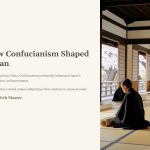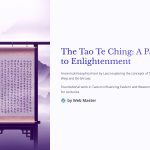 Confucianism, originating from China, has profoundly influenced Japan’s societal structures, ethical norms, and governance throughout history. Its integration into Japanese culture has led to unique adaptations that continue to resonate in contemporary society. This article explores the journey of Confucianism’s introduction to Japan, its assimilation, and its enduring impact.
Confucianism, originating from China, has profoundly influenced Japan’s societal structures, ethical norms, and governance throughout history. Its integration into Japanese culture has led to unique adaptations that continue to resonate in contemporary society. This article explores the journey of Confucianism’s introduction to Japan, its assimilation, and its enduring impact.

Early Transmission of Confucianism to Japan
The transmission of Confucianism to Japan can be traced back to the early 5th century. In 284 AD, a scholar from Baekje named Ajiki introduced Chinese classical texts to Japan. Following this, in 285 AD, another Baekje scholar, Wang In, brought “The Analects of Confucius” and “Thousand Character Classic,” laying the foundation for Confucian studies in Japan. These introductions marked the beginning of a significant cultural and philosophical exchange between the Korean Peninsula and Japan. citeturn0search7

Integration During the Asuka and Nara Periods
During the Asuka period (538–710 AD), Japan underwent substantial political and cultural transformations. The Taika Reform of 645 AD, influenced by Confucian principles, aimed to centralize and strengthen imperial authority. This period saw the establishment of a bureaucratic system modeled after China’s, emphasizing meritocracy and ethical governance. Confucianism became integral in shaping Japan’s legal codes and administrative practices, leading to the development of the Ritsuryō system—a set of criminal and administrative laws. citeturn0search0

Confucianism’s Role in the Heian Period
The Heian period (794–1185 AD) witnessed the flourishing of Confucianism among the aristocracy. It became the foundation of education and literary pursuits, influencing poetry, prose, and state rituals. The establishment of the Imperial University (Daigaku-ryō) institutionalized Confucian studies, ensuring that future bureaucrats were well-versed in its teachings. This era solidified Confucianism’s role in defining social hierarchies and ethical conduct within the court and beyond. citeturn0search0

Revival During the Kamakura and Muromachi Periods
The subsequent Kamakura (1185–1333 AD) and Muromachi (1336–1573 AD) periods saw a resurgence of Confucian thought, particularly through the introduction of Neo-Confucianism from China. Zen Buddhist monks, who traveled to China, brought back Neo-Confucian ideas, integrating them into Japanese philosophy. This fusion influenced samurai ethics, emphasizing loyalty, discipline, and moral rectitude, which became the bedrock of the Bushido code. citeturn0search0

Institutionalization in the Edo Period
The Edo period (1603–1868 AD) marked the zenith of Confucian influence in Japan. The Tokugawa shogunate adopted Neo-Confucianism as the official ideology to legitimize and maintain its rule. Confucian academies were established nationwide to educate the samurai class, reinforcing social order and hierarchical relationships. The emphasis on filial piety, loyalty, and duty during this period permeated all levels of society, shaping Japan’s cultural identity and social norms. citeturn0search0

Enduring Legacy in Modern Japan
Today, the legacy of Confucianism in Japan is evident in various aspects of society. Educational values emphasizing respect for teachers and the importance of learning reflect Confucian ideals. Corporate structures often mirror Confucian hierarchical relationships, valuing harmony, loyalty, and collective well-being. While modern Japan has embraced diverse philosophies, the underlying Confucian principles continue to influence social interactions and ethical considerations.
*Capturing unauthorized images is prohibited*




